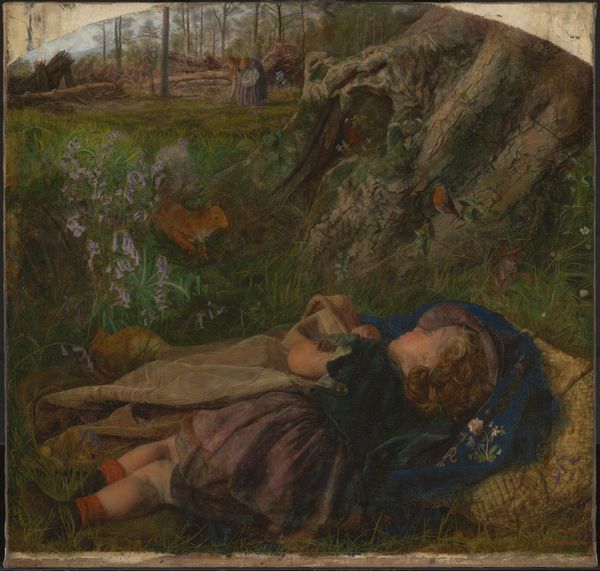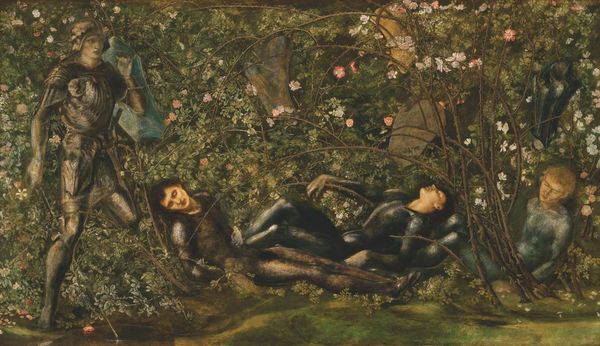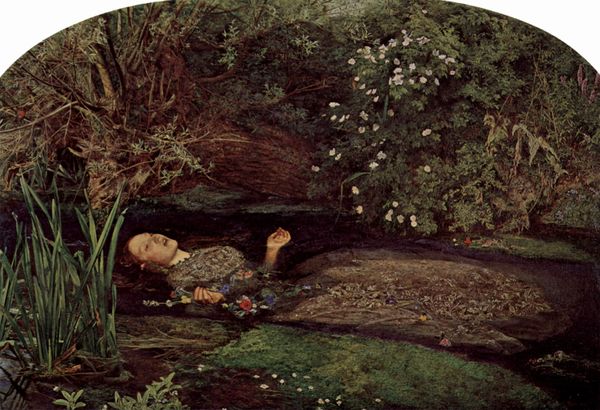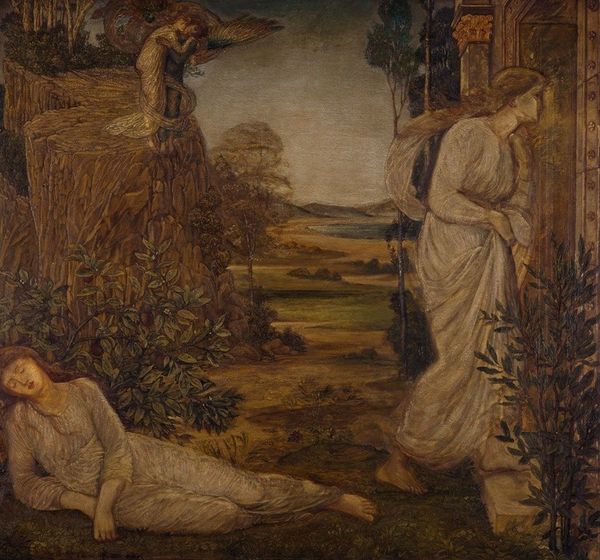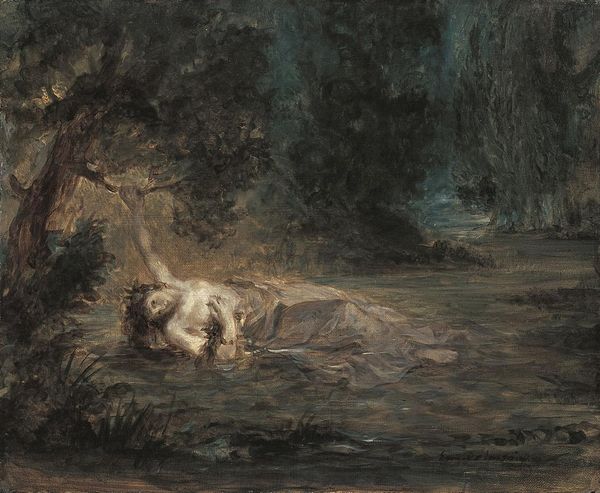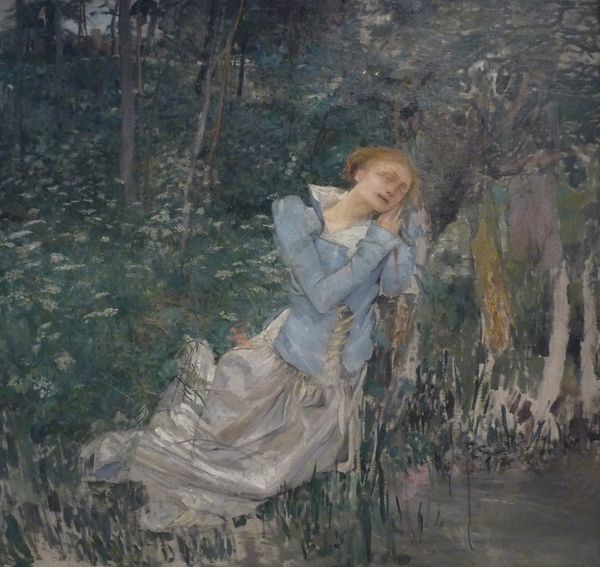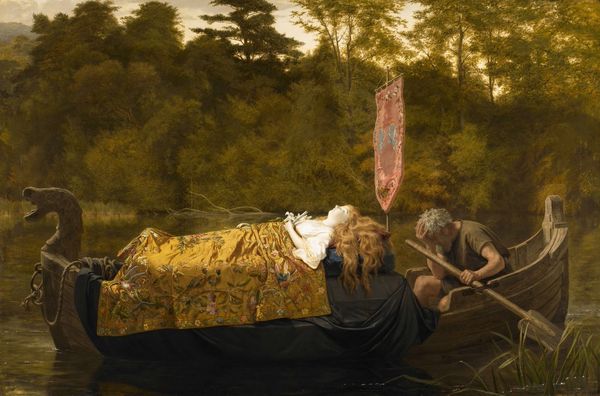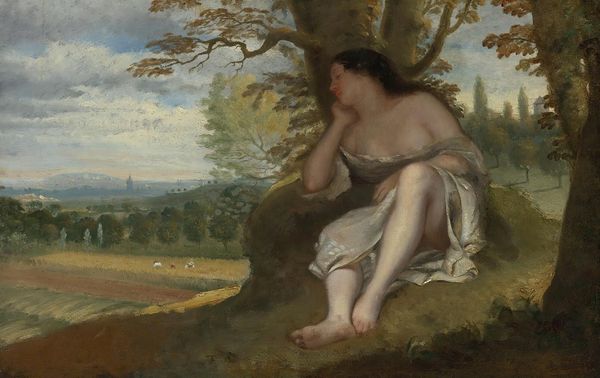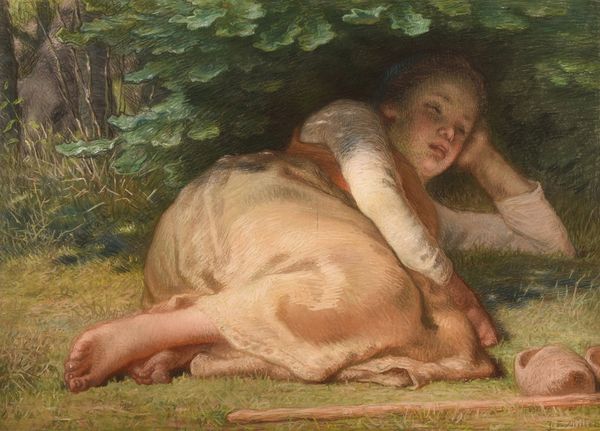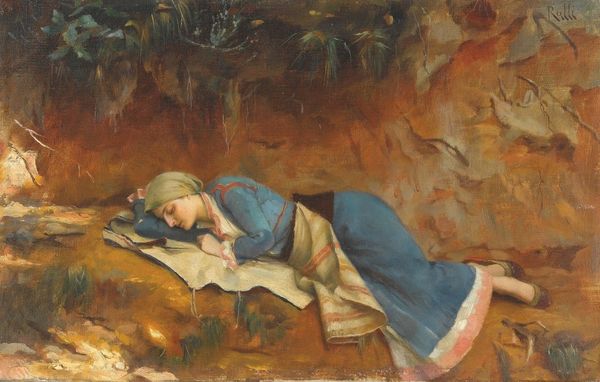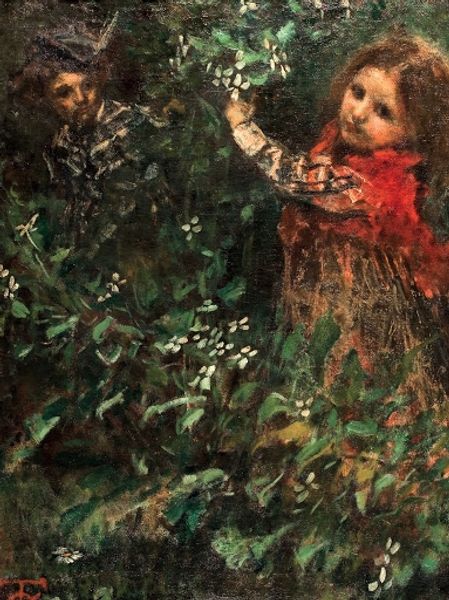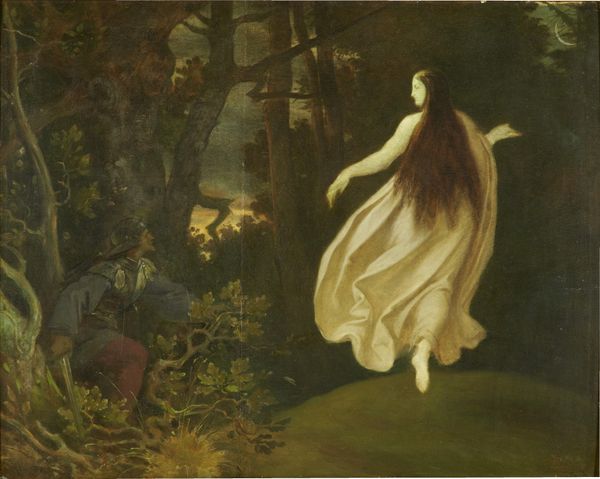
Dimensions: 138.7 x 93.5 cm
Copyright: Public domain
Curator: This is "Alina," an oil painting dating to 1880 by Leon Wyczółkowski. The painting falls within the Romanticist style and captures a landscape scene. What are your first impressions? Editor: It’s intensely melancholic. There’s a dreamy, almost Ophelia-like quality to the figure nestled amidst the dense vegetation. I wonder, what statements about female identity, particularly concerning innocence or even vulnerability, might the artwork communicate? Curator: It does evoke a sense of vulnerability, doesn’t it? Butterflies hover just above her head. Butterflies traditionally symbolize transformation and the soul, lending a spiritual dimension. In some cultures, they even represent the deceased. There is a haunting symbolism here. Editor: The pose seems so staged, almost theatrical. Knowing its context matters – who was Alina? Was this a commissioned portrait, an allegory? Was Wyczółkowski exploring prevalent notions of idealized femininity, or perhaps even critiquing them by juxtaposing her passivity with the wildness of the landscape? The era certainly informed such perspectives. Curator: Unfortunately, verifiable details about Alina herself are scarce, making the symbolic readings more crucial. The wilderness encroaching around her, the muted colors—do these not also serve as metaphors for internal states? There’s a sense of immersion in a liminal space, between waking and dreaming, between life and perhaps something more… transcendent. Editor: The landscape seems almost oppressive. It overwhelms her, suggesting a conflict between nature and the individual. The composition is so carefully arranged to produce that exact feeling in the viewer. Was the artwork conceived within a framework of socio-political unrest, perhaps commenting on a feeling of entrapment or societal expectation prevalent at that time? Curator: While Wyczółkowski may not have been directly referencing specific unrest in "Alina", the late 19th century was a time of shifting ideologies. Considering the pervasiveness of such Romantic themes, one could say it is the representation of collective emotion manifesting via deeply ingrained, broadly disseminated symbolic modes. The dream-like state that you mention and the symbolic butterflies certainly lend credence to such interpretation. Editor: Exactly. To think, though, how interpretations continue to evolve… placing the work in dialogue with contemporary anxieties about our relationship with nature certainly elicits powerful associations with environmental awareness. Curator: Indeed, viewing "Alina" reminds us that symbols aren’t static; their meanings morph with cultural shifts and personal reflections. Editor: It shows the artwork can embody new relevance within unfolding societal circumstances, opening vital conversations regarding what we collectively see as fundamental.
Comments
No comments
Be the first to comment and join the conversation on the ultimate creative platform.
